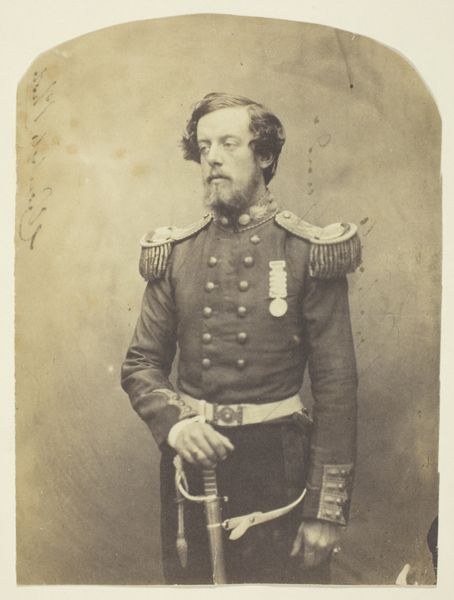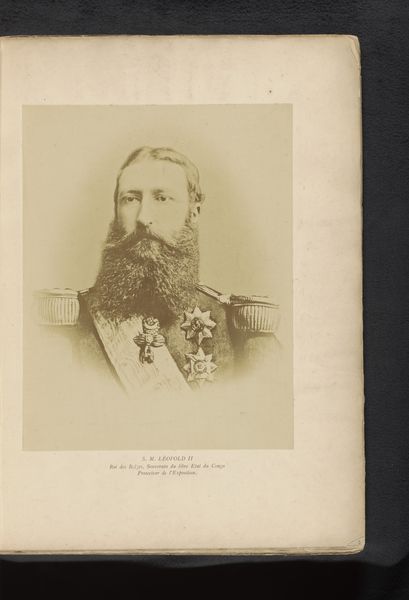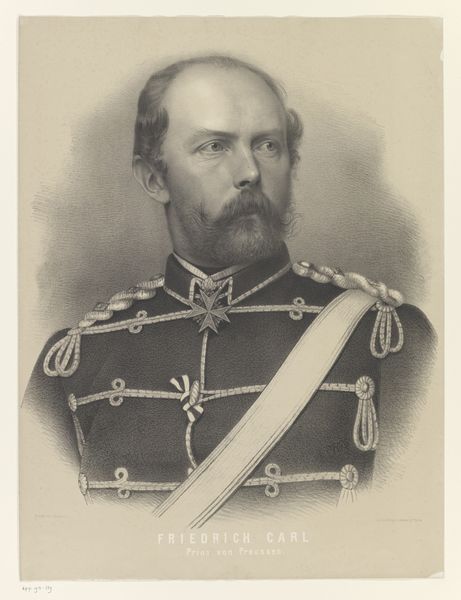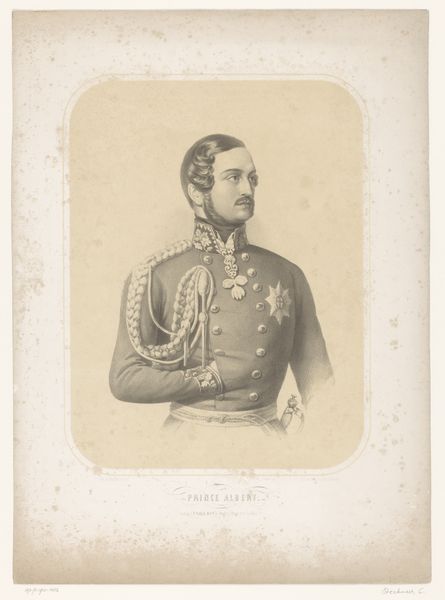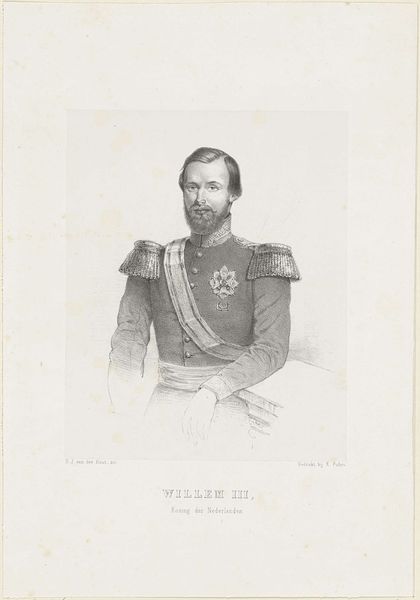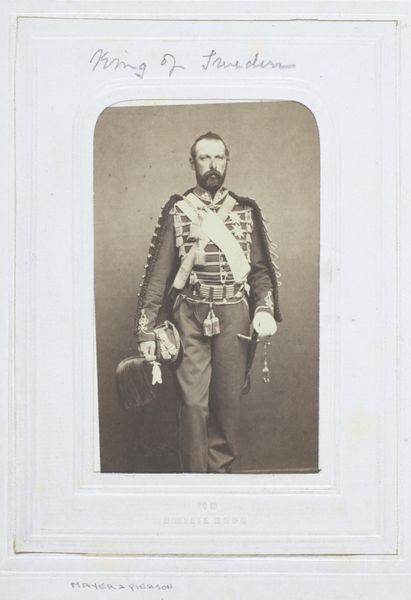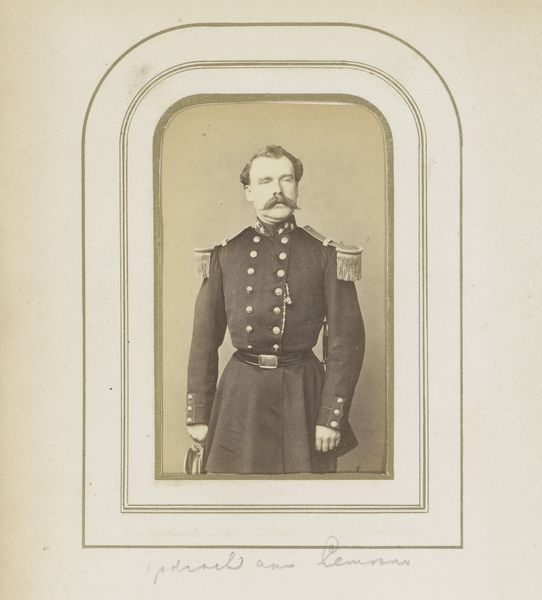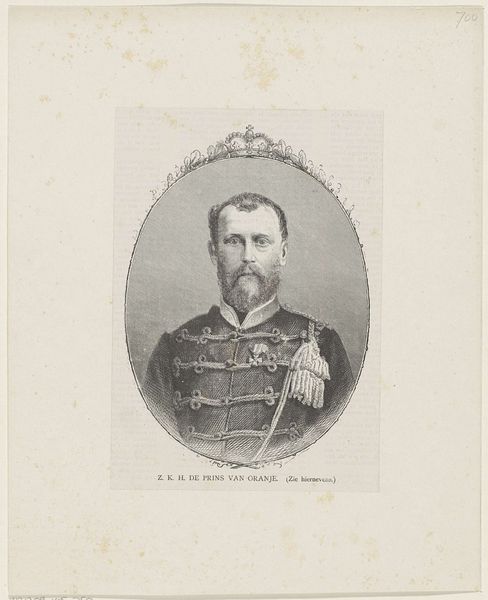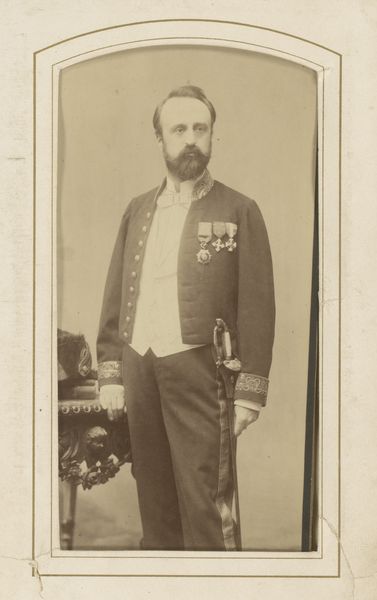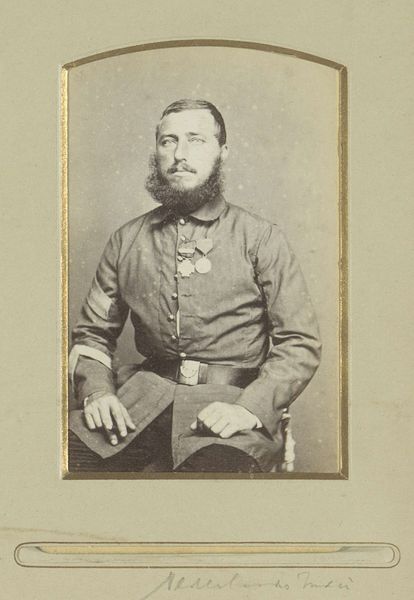
Dimensions: height 720 mm, width 557 mm
Copyright: Rijks Museum: Open Domain
Curator: Welcome. Here we have a print entitled "Portret van Frederik Willem II, koning van Pruisen" by Georg Engelbach, estimated to be created between 1827 and 1890. Editor: Immediately, what strikes me is the meticulous rendering of texture – look at that beard! You can almost feel the individual hairs. It's quite a striking piece of graphic work, especially given the period. I am very curious about what sort of materials the artist used. Curator: Well, the social context is paramount. This image participates in constructing the public image of Prussian royalty. Reproducing such portraits through printmaking allowed for wide distribution. It created a sense of familiarity and connection between the ruler and his subjects. This one would have contributed to building legitimacy. Editor: Absolutely, and that speaks directly to the craft and labour involved in its production, from initial drawing perhaps in graphite to its transfer onto a printing matrix and, ultimately, to the final print itself. I'd be keen to know how many impressions were made, where they circulated and how that accessibility played into ideas around both monarchical power, and access to imagery for general population. It all speaks to the democratization of the royal image, made possible through this medium. Curator: Certainly. The artist's choice of portraying Friedrich Wilhelm II also suggests the persistence of Romantic ideals well into the 19th century. There's a clear emphasis on idealized, stately imagery which attempts to elevate him, embedding his position in a heroic narrative. The work shows that monarchy found new ways of promoting its authority. Editor: It also raises questions about skill and access, who learned these printmaking techniques and the role of workshops in circulating that know-how, these considerations complicate traditional hierarchical notions concerning art as “high” and "low,". The image as propaganda gets complicated when one asks about where images circulated in Prussian society. It encourages a close material investigation. Curator: Ultimately, the artwork exists as evidence, prompting us to reconsider the narrative surrounding royal authority during the time when mechanical reproduction processes changed the ways that societies negotiated political power. Editor: For me, it’s an image full of detail, literally rendered from tangible stuff. It points to a larger conversation about value— the materials that it is made from, the time invested to design and execute and finally, distribute it, not to mention its status as symbol.
Comments
No comments
Be the first to comment and join the conversation on the ultimate creative platform.
